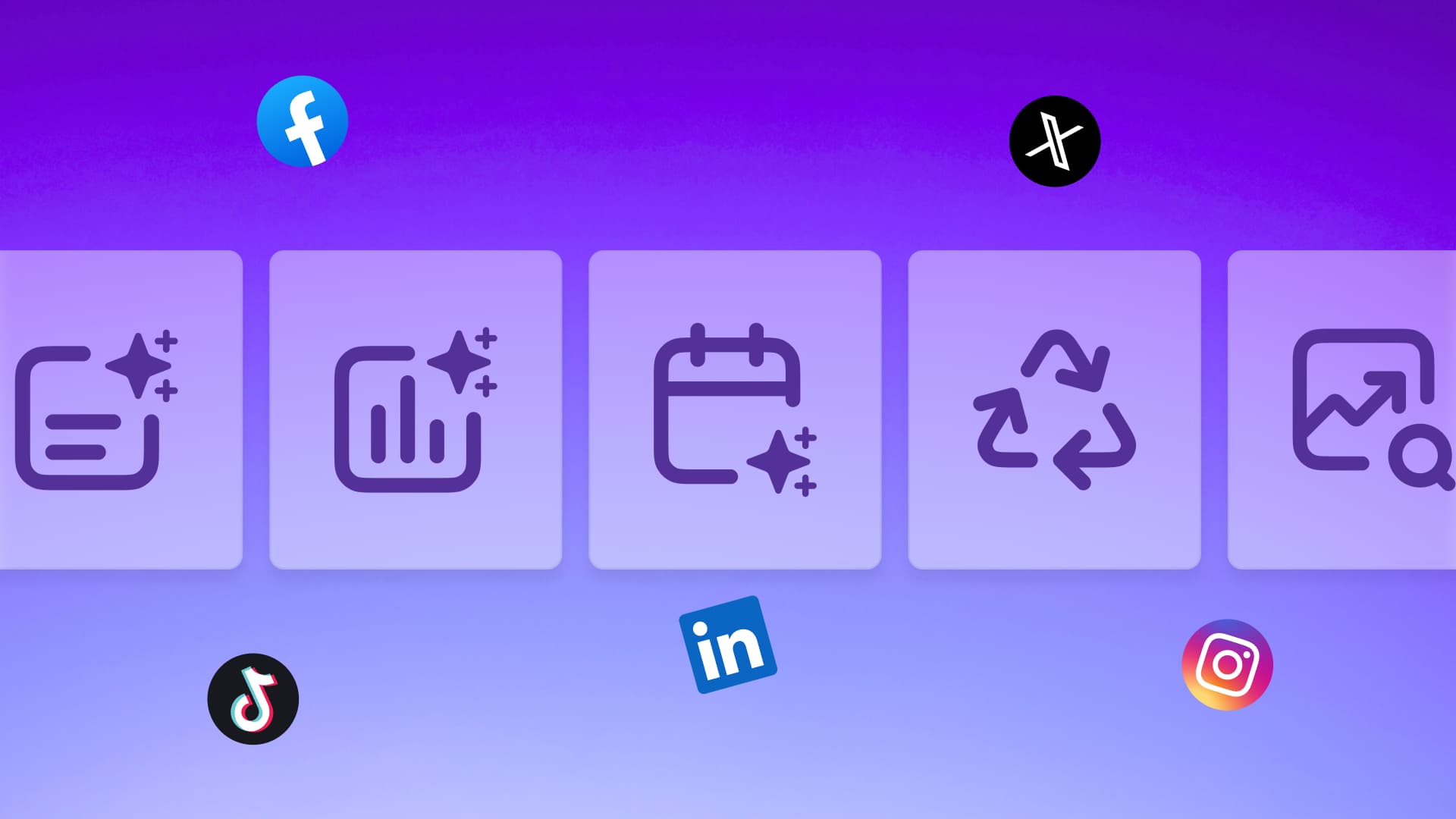New

Turn Your DMs Into Lead Gen!
Learn how to collect lead data from your DMs such as email addresses, phone numbers, and more right from your social inbox. If you are not yet automating your DMs your competitors are outpacing you.

How Something Social Saved 75% of Their Time and Increased Revenue by 15%
See how a fast-growing agency improved operations, cut down hours of manual work, and unlocked new revenue opportunities with Vista Social.
New

50 Unique Social Media Ideas for Consistent Content Creation
Discover 50 unique social media post ideas to engage your audience, grow your brand, and maintain a consistent content strategy with ease!

Mastering Content Reuse: The Key to a Consistent and Sustainable Posting Strategy
Published on September 13, 2025
7 min to read
Your Guide to UTM Parameters: How to Track Your Marketing Efforts
Summarize with AI
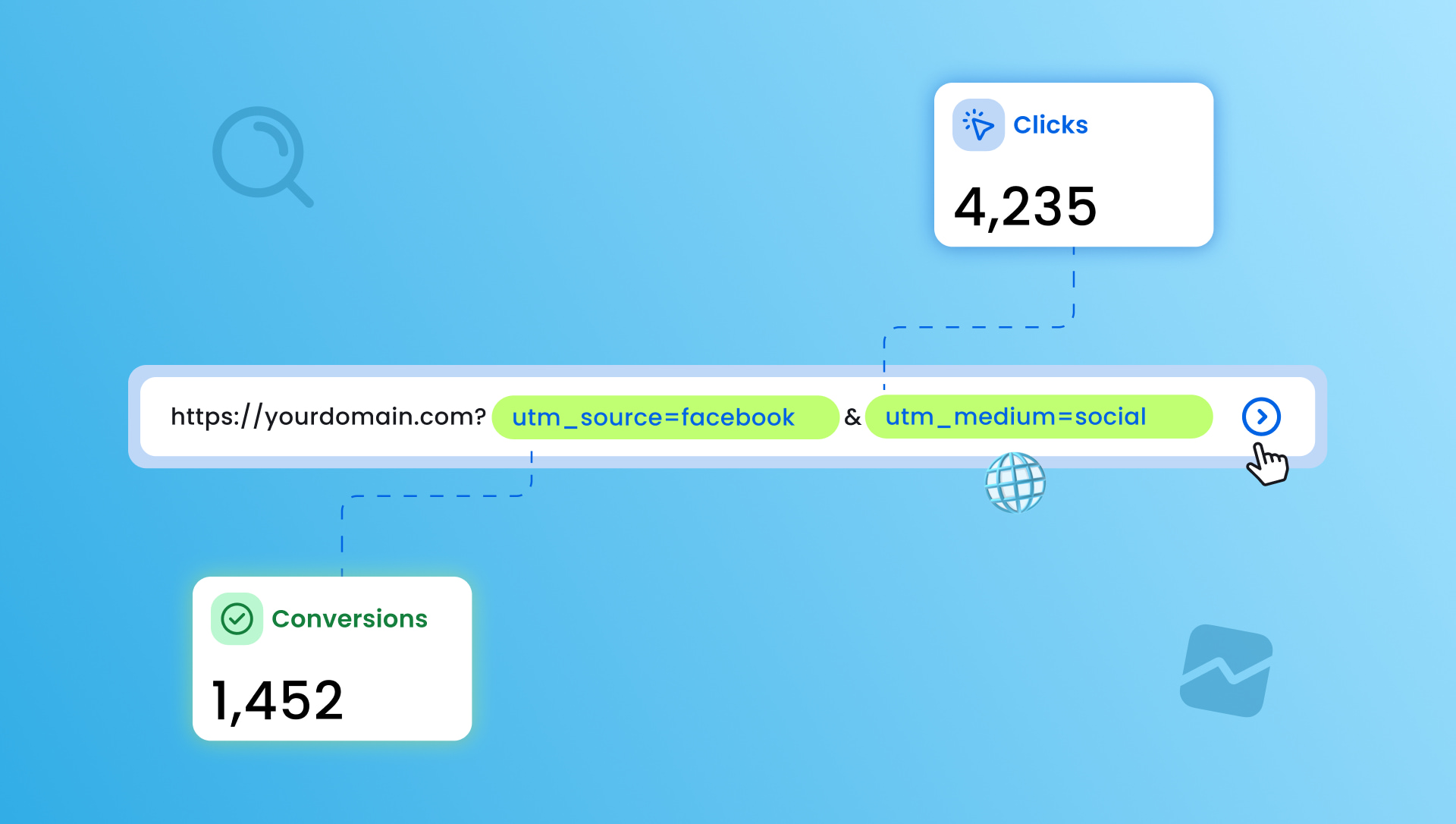

Table of Content

Ever posted content on different channels and wondered which one brought traffic to your website? You’re not alone. UTM parameters are the secret tool marketers use to track their campaigns and get clear answers about what works.
UTM parameters help you know exactly where your traffic comes from. This gives you control over all your campaigns. However, many companies miss out on crucial data about their marketing performance, making smart budget decisions nearly impossible.
Think of UTM parameters as digital breadcrumbs that follow your audience from link to website. They solve the biggest problem in marketing: knowing what works.
UTM parameters show you exactly where your traffic comes from so you can make smart decisions. Read on to learn how to use this marketing tool.
Table of contents
What are UTM parameters?
UTM parameters are small pieces of code you add to the end of website links. They track where your website visitors come from.
UTM stands for Urchin Tracking Module. These tools were first made by Urchin Software Corporation (now Google Analytics). UTM tags help you see which marketing campaigns, social posts, or emails bring the most visitors to your site.
Here’s how they work.
When someone clicks a link with UTM tags, the code gets sent to your analytics tool with the visitor info. This shows you not just that someone visited your site, but exactly how they got there. It’s like having a GPS tracker for every click.
UTM parameters work well with Google Analytics and other tools. They sort your traffic into reports automatically. This makes it easy to compare how different channels and campaigns perform. You don’t have to sort anything manually.
A link with UTM parameters looks like this:
www.website.com/landing-page?utm_source=linkedin&utm_medium=social&utm_campaign=black_friday
These parameters tell us:
- The visitor came from LinkedIn
- LinkedIn is a social network
- This link belongs to the Black Friday campaign
Let’s dive into these different parameters next.
What are the five standard UTM parameters?
There are five standard UTM parameters that help you track all aspects of a click, from understanding exactly where a user came from to which campaign this click is associated with to which version of an ad or landing page they saw.
Learn more about what each one does and when to use it.
utm_source
This parameter tells you exactly where the traffic originated. Think of it as answering the question, “Who sent this visitor?”
Common examples include:
- facebook (for Facebook posts)
- google (for Google Ads)
- newsletter (for email campaigns)
- linkedin (for LinkedIn content)
Pro tip: Keep source names consistent and lowercase. Use “facebook” for all Facebook traffic, rather than mixing in “Facebook” or “fb.”
utm_medium
Medium describes the general category of marketing channel. It answers, “How did they get here?”
Popular mediums include:
- social (for social media posts)
- email (for email campaigns)
- cpc (for paid search ads)
- organic (for unpaid content)
- referral (for partner links)
Pro tip: Stick to standard medium names when possible. Google Analytics recognizes specific mediums like “email” and “cpc,” which helps with automatic categorization.
utm_campaign
This parameter groups related marketing efforts and campaigns together.
Examples include:
- summer_sale_2025
- product_launch_march
- webinar_registration
- holiday_promo
Pro tip: Make campaign names clear enough that any team member can understand what the campaign was about months later.
utm_term
utm_term was made for paid search campaigns. It tracks which keywords triggered your ads. Most people use it for Google Ads and other paid search platforms. Some marketers also use it to track different audience groups.
Pro tip: Use this UTM parameter for paid search campaigns when you want to see which keywords bring traffic and sales.
utm_content
This parameter helps you test different versions of the same campaign.
For example:
- button_blue vs button_red (testing CTA button colors)
- header_cta vs footer_cta (testing placement)
- video_ad vs image_ad (testing creative formats)
Pro tip: Content parameters are great for A/B testing and comparing different ads in the same campaign.
How to create UTM parameters
You have two main options for creating UTM parameters: manual creation or using an automated UTM builder.
Manual creation involves writing out the UTM parameters yourself. Here’s the basic format:
https://yourwebsite.com/page?utm_source=facebook&utm_medium=social&utm_campaign=summer_sale_2025
This process can be slow and hard, so most marketers use a tool like Vista Social’s UTM builder.
Vista Social’s UTM builder makes creating UTM parameters easy. Here’s how to set it up:
1. Go to Settings → Publishing Settings
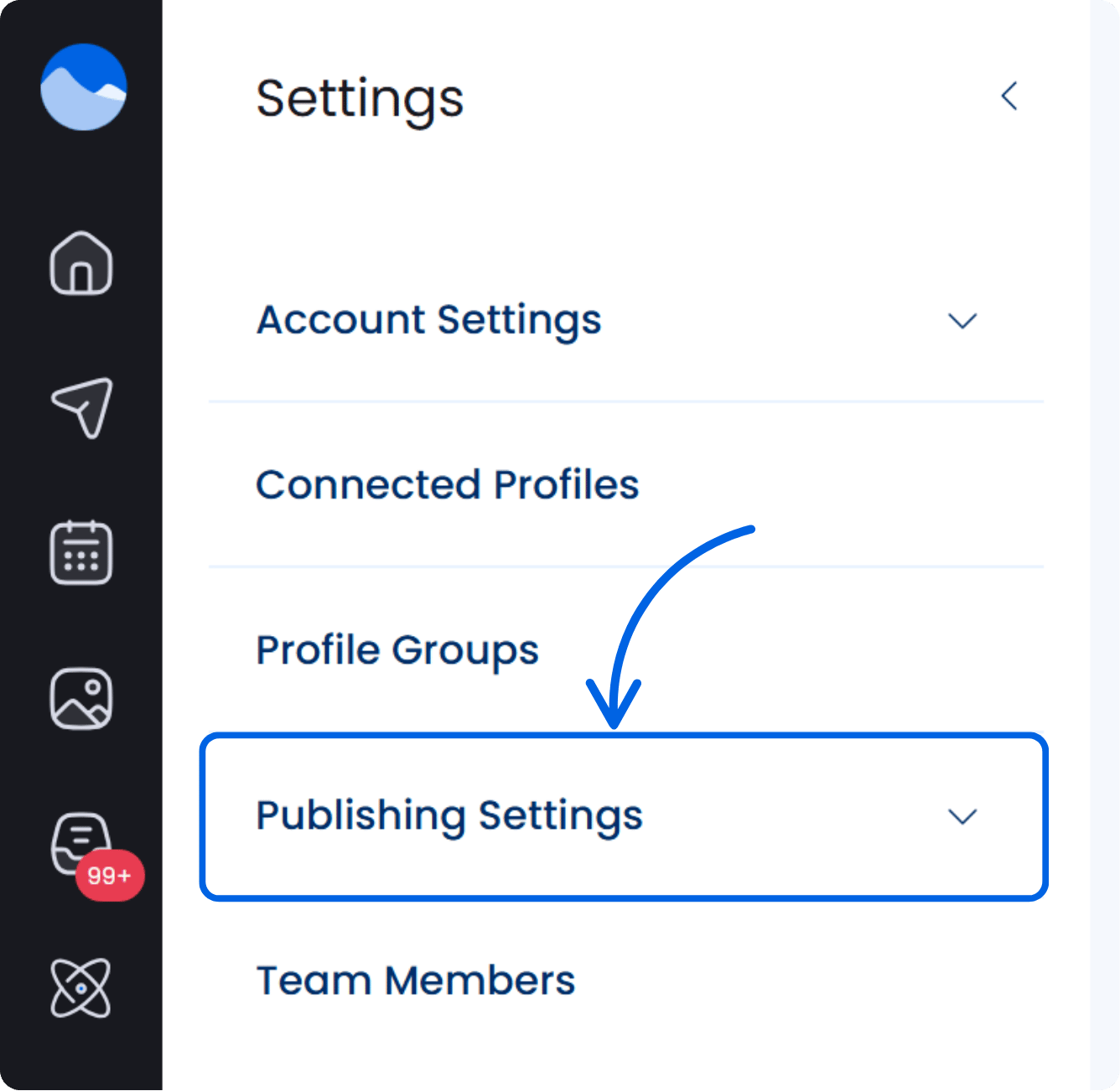
2. Under Publishing Settings, go to URL Tracking
Try Vista Social for Free
A social media management platform that actually helps you grow with easy-to-use content planning, scheduling, engagement and analytics tools.
Get Started Now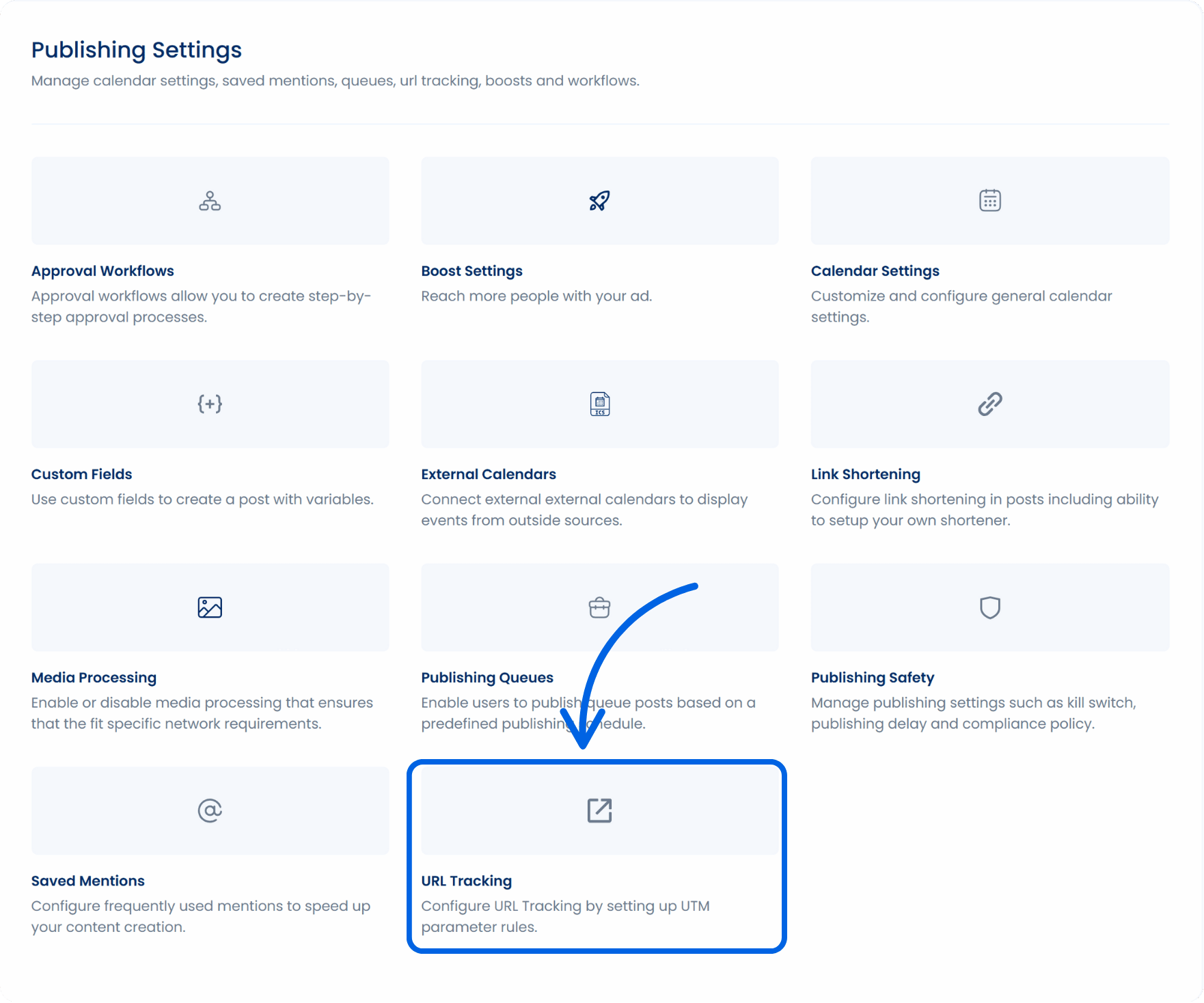
3. Click Add URL under URL Tracking
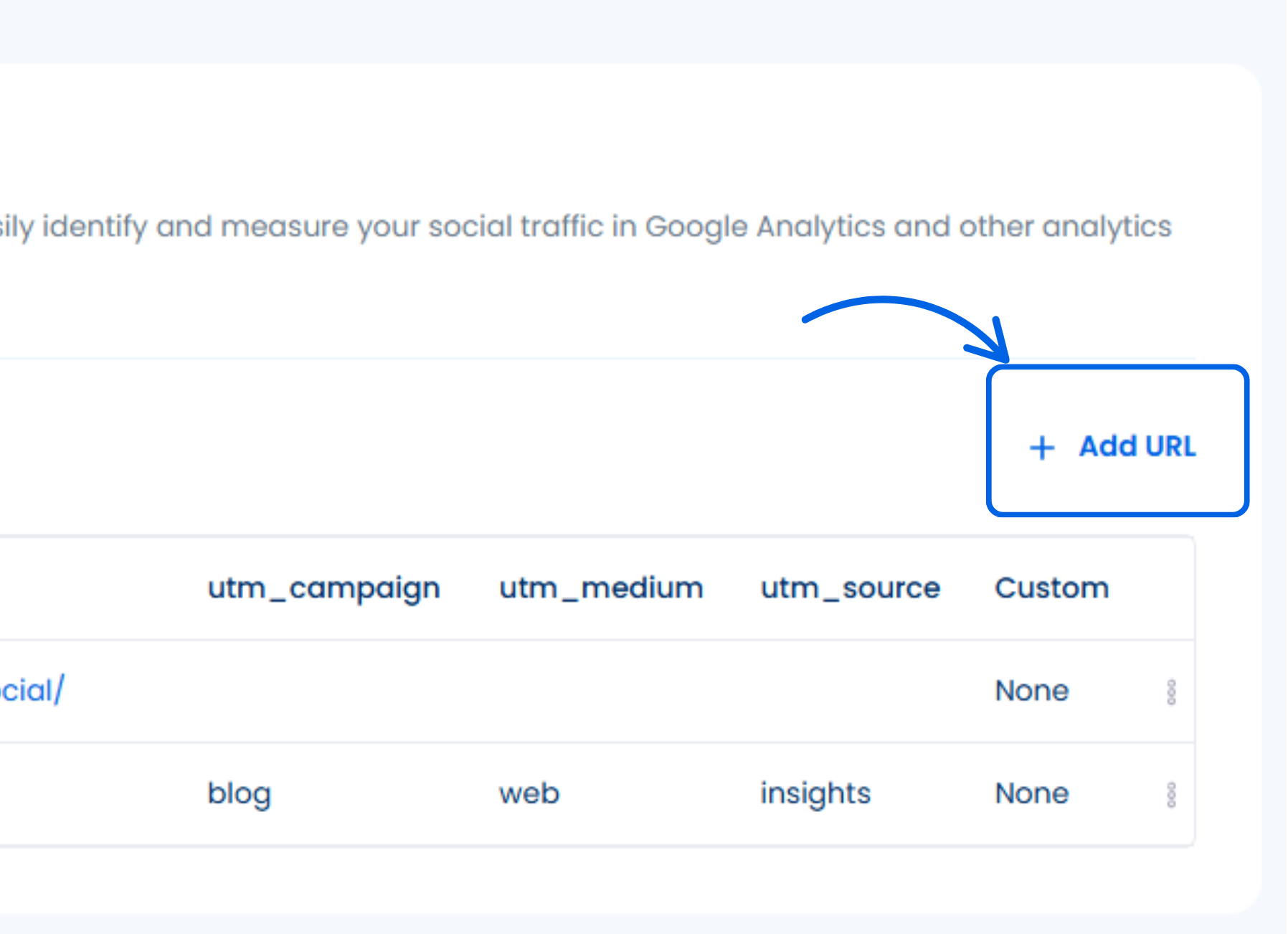
4. Enter the website link you want to track
- When you add this link to your posts, Vista Social will automatically attach your UTM parameters
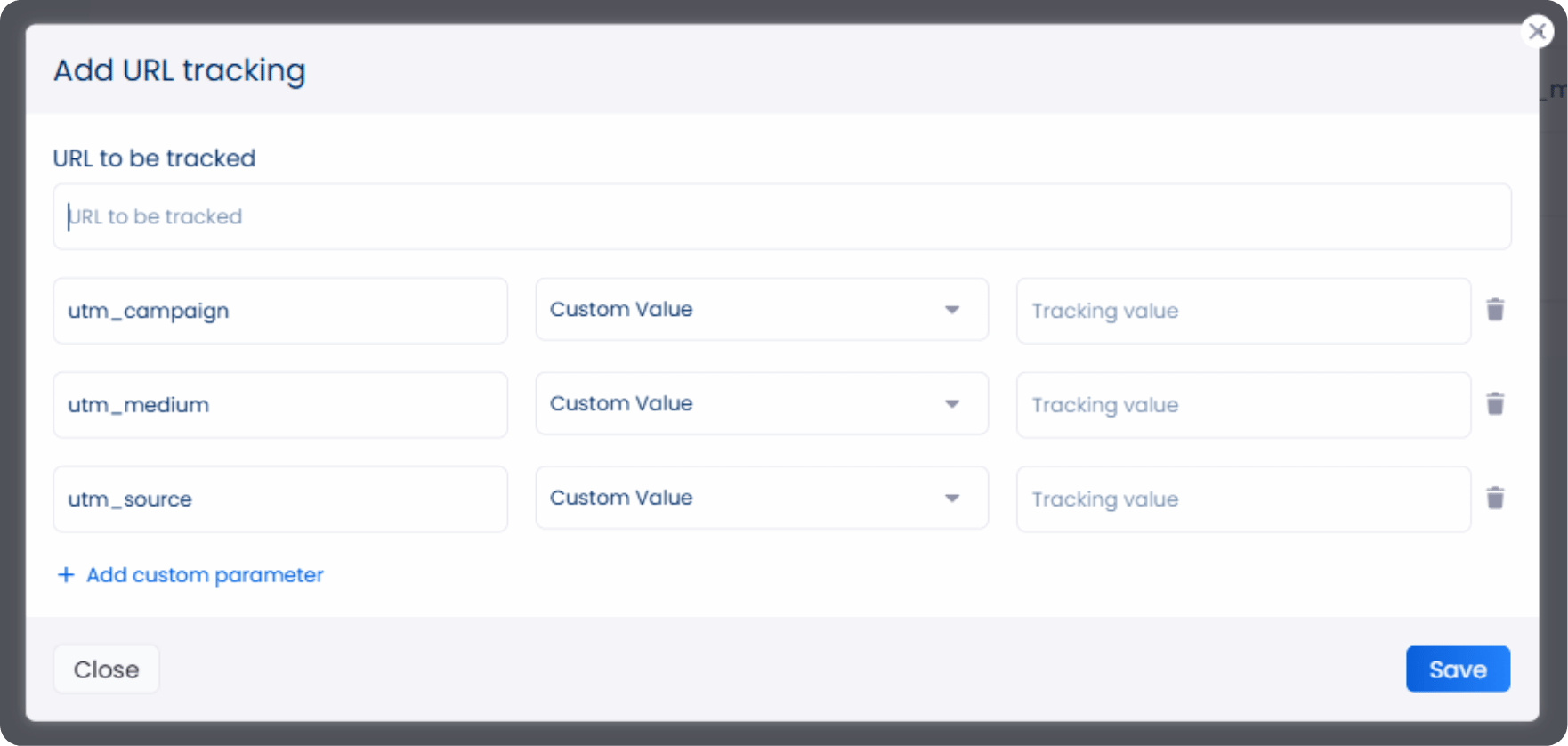
5. Set up your default parameters like campaign name, source, and medium
- Pick your choice from the dropdown menu, add extra info if needed, and turn the parameter on or off
6. (Optional) Add custom parameters by typing a parameter name (up to 100 characters) and picking the value from the dropdown
How to analyze your UTM parameter data
Once your UTM parameters are collecting data, the real magic happens in analysis. Here’s how to turn those tracking codes into actionable insights.
Reading UTM reports in Google Analytics
In Google Analytics 4, find your UTM data under Reports > Acquisition > Traffic acquisition. This report breaks down traffic by source, medium, and campaign, showing you:
- Sessions: How many visits each UTM tag generated
- Users: How many unique people clicked your links
- Conversion rate: What percentage of UTM traffic completed valuable actions
- Revenue: Actual money generated from each traffic source
You can also create custom reports that focus specifically on your UTM campaign data, making it easier to track performance over time.
Tracking social media ROI with UTM parameters
UTM parameters transform social media from a “feel-good” activity into a measurable revenue driver. By tracking which social posts lead to actual conversions, you can:
- Identify top-performing content types: Maybe video posts drive 3x more conversions than image posts
- Optimize posting times: See which time slots generate the most valuable traffic
- Allocate budget effectively: Spend more on platforms and content that deliver real results
- Prove social media value: Show executives exactly how social media contributes to business goals
Vista Social feature: Vista Social adds UTM parameters to your links automatically when you schedule posts. You can see which posts bring the most website visits and sales right in your Vista Social dashboard. No need to check Google Analytics manually.
Key metrics to track
Focus on metrics that connect to business goals rather than vanity metrics. We break down key metrics to track by category below.
Traffic quality metrics:
- Bounce rate (lower is usually better)
- Pages per session (higher indicates engaged visitors)
- Session duration (longer suggests interest)
Conversion metrics:
- Goal completion rate
- E-commerce conversion rate
- Revenue per session
- Customer lifetime value
Attribution metrics:
- First-click attribution (which UTM source first brought the visitor)
- Last-click attribution (which UTM source converted the visitor)
- Multi-touch attribution (full customer journey across multiple UTM sources)
Making data-driven decisions from UTM insights
UTM data should drive specific actions in your marketing strategy:
- Content optimization: If videos work better than images in your UTM data, spend more on videos
- Platform prioritization: If LinkedIn gets you 15% sales but Instagram only gets 3%, focus more on LinkedIn
- Campaign timing: UTM data might show that morning posts get more clicks, but evening posts get more sales
- Budget allocation: Use UTM data to spend more money on what works and less on what doesn’t
UTM parameter best practices
Implementing UTM parameters effectively requires discipline and consistency. Here’s how successful marketing teams manage their UTM systems.
Create consistent naming conventions
Create a UTM naming convention document that includes:
- Approved source names: facebook, google, linkedin, newsletter, direct_mail
- Standard mediums: social, email, cpc, organic, referral, display
- Campaign naming format: [year][month][campaign_type] (example: 2025_march_product_launch)
- Content naming format: [placement]_[creative_type] (example: header_cta_blue)
Share this document with everyone who creates marketing content, and review it regularly to ensure compliance.
Document everything for effective team collaboration
- UTM tracking spreadsheet: Keep a list of all your UTM campaigns with what they’re for and how long they’ll run
- Regular audits: Monthly reviews help catch naming inconsistencies before they pollute your data
- Training new team members: Anyone who makes marketing content should learn UTM best practices on their first day
- Cross-platform coordination: When you run campaigns on different platforms, use the same UTM names everywhere
Conduct regular audits and cleanups
- Weekly checks: Look for new UTM parameters that don’t follow your naming conventions
- Monthly analysis: Review which UTM campaigns generated the most valuable traffic and conversions
- Quarterly cleanup: Save old campaign data and update your UTM strategy based on what you learned
- Annual strategy review: Use a full year of UTM data to plan next year’s marketing strategy and budget
Avoid common mistakes
- Inconsistent naming: Using both “Facebook” and “facebook” creates separate data streams
- Using spaces: Spaces get converted to “%20” in URLs, making them messy and hard to read
- Overcomplicating parameter names: Keep them simple and readable
- Not documenting conventions: When team members use different naming styles, your data gets fragmented
- Tagging internal links: Only use UTM parameters for traffic coming from external sources
Vista Social advantage: Vista Social’s UTM tracking automatically handles these common issues, ensuring clean, consistent data every time you publish social media content.
[Must Read: The Complete Guide to Social Media ROI Measurement in 2025]
Take advantage of UTM parameters in your marketing strategy
UTM parameters turn marketing guesswork into real data. When you add UTM tracking to all your campaigns, you’ll know which ones work and which ones waste your budget.
UTM success isn’t about tracking everything. It’s about tracking the right things the same way every time. Focus on campaigns that matter to your business. Keep your naming simple and clean. Use the data to decide where to spend your marketing money.
Want to take control of your marketing results? Start using UTM parameters today. Watch your confusing data turn into clear insights that help your business grow.
P.S. Vista Social’s UTM tracking shows you your social media ROI without extra work. We handle everything from creating UTM parameters to detailed reports. Our platform proves the value of every social media campaign.
Sign up for Vista Social today and turn your social media work into real business results!
About the Author
Content Writer
Russell Tan is a content marketing specialist with over 7 years of experience creating content across gaming, healthcare, outdoor hospitality, and travel—because sticking to just one industry would’ve been boring. Outside of her current role as marketing specialist for Vista Social, Russell is busy plotting epic action-fantasy worlds, chasing adrenaline rushes (skydiving is next, maybe?), or racking up way too many hours in her favorite games.
Read with AI
Save time reading this article using your favorite AI tool
Summarize with AI
Never Miss a Trend
Our newsletter is packed with the hottest posts and latest news in social media.

You have many things to do.
Let us help you with social media.
Use our free plan to build momentum for your social media presence.
Or skip ahead and try our paid plan to scale your social media efforts.
P.S. It will be a piece of cake 🍰 with Vista Social
Subscribe to our Newsletter!
To stay updated on the latest and greatest Social Media news. We promise not to spam you!
